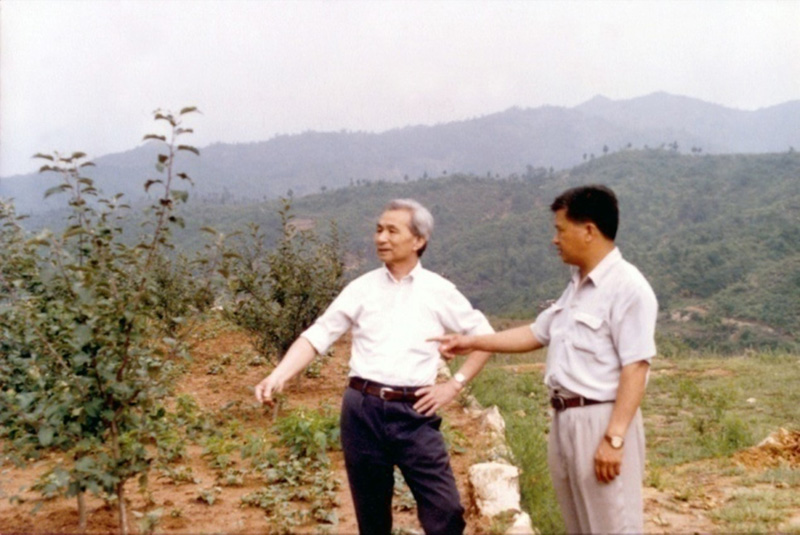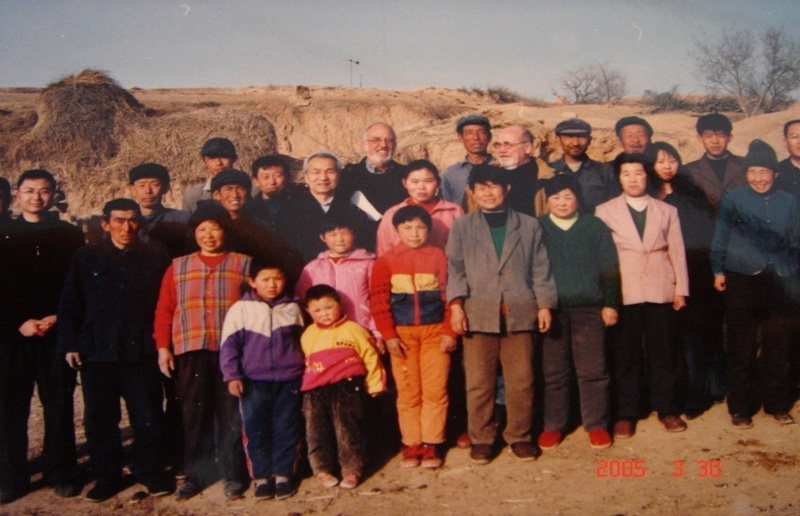
Yan Ruizhen - Eradicating Poverty and Moving Towards Well-being
Since the 1990s, I have visited many impoverished mountainous areas to conduct economic surveys and have also personally participated in anti-poverty work. I found that impoverished mountainous areas generally share the following two characteristics: ecological imbalance and a natural economy model.

Mountainous areas account for nearly 70% of China's land area. Due to the force of gravity, in places where forests, grasslands, and other vegetation are destroyed, soil on slopes is continuously washed down to the bottom of the slopes by rainfall, forming flood streams in the gullies between two slopes, carrying soil, sand, and stones towards the mouth of the gully. Even with small amounts of rainfall, this can also flood the agricultural fields outside the gully, accumulating silt and reducing the fertility of the fields, affecting the construction of drainage and irrigation projects. In the case of heavy rainfall, floods can form, destroying downstream farmland, roads, bridges, villages, and causing property and life losses.
As the fertile topsoil layer is washed away by surface runoff, soil structure deteriorates, and without the protection and stabilization by plant roots, the soil loses its water storage capacity. When it rains, the fields become waterlogged, and after a few sunny days, they become dry. A single acre of farmland produces only about one or two hundred jin of crops, and it takes three or four acres of land to sustain one person, forcing farmers to clear new lands on the mountain. These newly cleared lands then cause new soil erosion, and a vicious cycle leads to increasingly severe ecological imbalance.
In such an ecological environment, during years of favorable weather, some households with better labor conditions can barely maintain subsistence, but in years of poor harvests, most households are unable to achieve subsistence, let alone those with poor labor conditions or suffering from illnesses, who can only become impoverished. The households here are trapped in a closed, self-sufficient natural economy model that seeks only to meet their own grain needs. This model, lacking economic drive and vitality, has been proven over thousands of years to be a dead-end economic model.
To solidify the escape from poverty, it is necessary to start by addressing ecological imbalance and the natural economy model.

To manage ecological imbalance, efforts must begin with slope and gully treatment. Through biological measures such as tree and grass planting, along with engineering measures like constructing horizontal ditches and terraces, slope surfaces can be controlled, intercepting and retaining water and soil within the soil layers to prevent them from being washed down the slope. At the gully mouths formed between two slopes, water and soil dams are built to intercept and retain water and soil coming down from the gully during heavy rainfall, silt up the mud within the gully, thereby protecting the agricultural land outside the gully, and over time, accumulate into new farmland for agricultural production. Proper management of slopes and gullies creates conditions for managing farmland below the slopes and outside the gullies. These rain-fed barren farmlands are the main source of production and livelihood for farmers. By digging drainage ditches, constructing irrigation canals, leveling land, and developing water sources on these dry lands, transforming them into basic farmlands with guaranteed harvests in both drought and flood conditions, yields can be significantly increased.
Where three or four acres of land were needed to sustain one person in the past, now only half an acre is sufficient. People can plant crops with higher economic value, as well as fodder crops to develop animal husbandry. In the terraced fields and fish-scale pits that have been managed, it is also possible to develop characteristic industries such as fruit trees, tea trees, and oil crops. Farmers have more production options; some households can process agricultural products, others can engage in sales, and still others can send labor to cities for employment. Some villages, due to good ecological construction, can also develop tourism and rural tourism.
In the past, farmers cultivated a few acres of land just for subsistence. Now, with surplus agricultural products, they need to find ways to market them. Some agricultural products are produced specifically for the market, gradually breaking and replacing the self-sufficient natural economy model with a market-oriented economic model. This economy produces to meet market demands, which are diverse and constantly evolving, further motivating producers to innovate.
Following the path of a market-oriented economic model will demand that farmers continuously expand production and increase income; require the construction of roads connecting to the outside world to create markets and establish trade channels; require the improvement of service systems equipped with information technology to enhance product quality and technological content, thereby increasing market competitiveness; and farmers will also demand modern education in the increasingly open external world.
Of course, a journey of a thousand miles begins with a single step. To complete this process, it mainly relies on the internal drive of farmers. Without such internal motivation, the process cannot be initiated or sustained. This process will require a substantial amount of start-up capital and investment, and external assistance is indispensable. Some investments that are profit-oriented should be made by the beneficiaries (profit-making enterprises); some that benefit farmers, such as purchasing saplings, livestock, and the construction of animal shelters, should be financed by the farmers themselves and not entirely depend on the state. For farmers currently unable to raise funds, the solution should come through loans that must be repaid according to contract stipulations.

